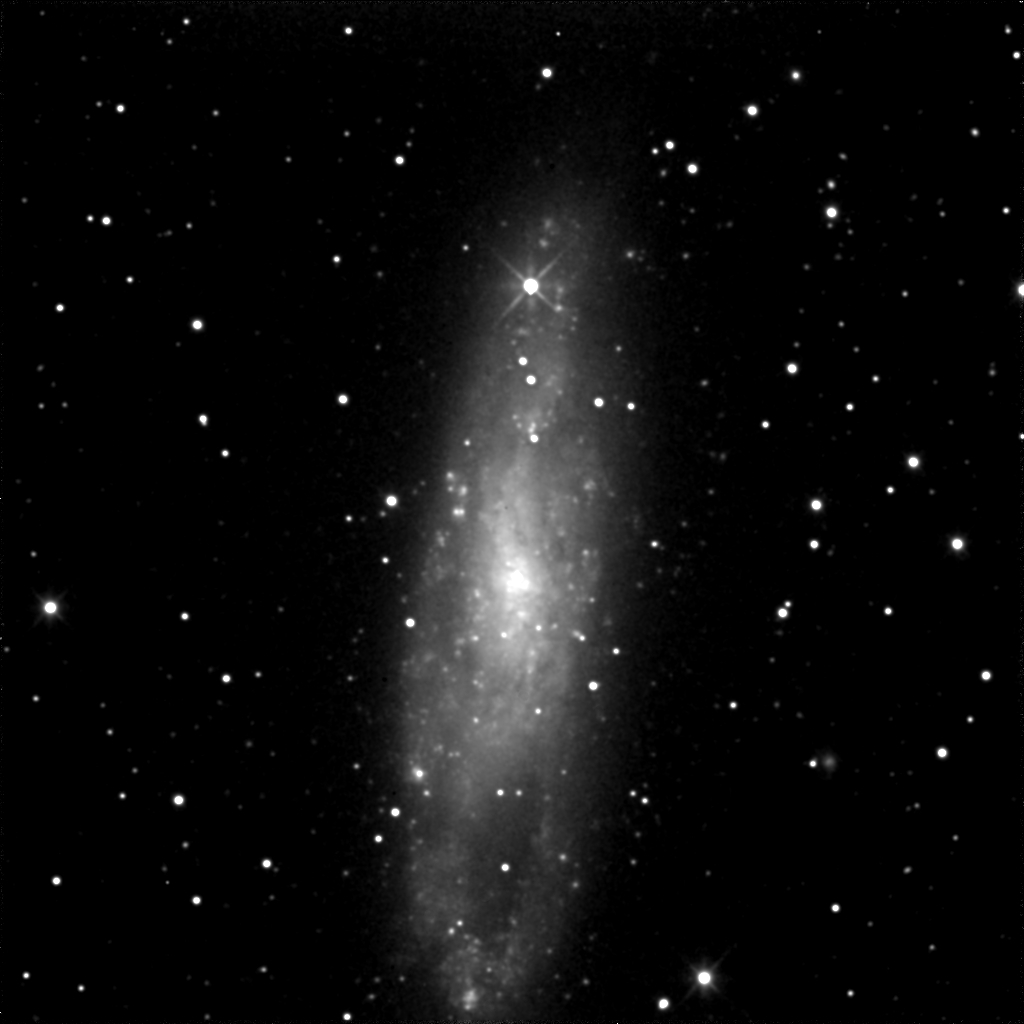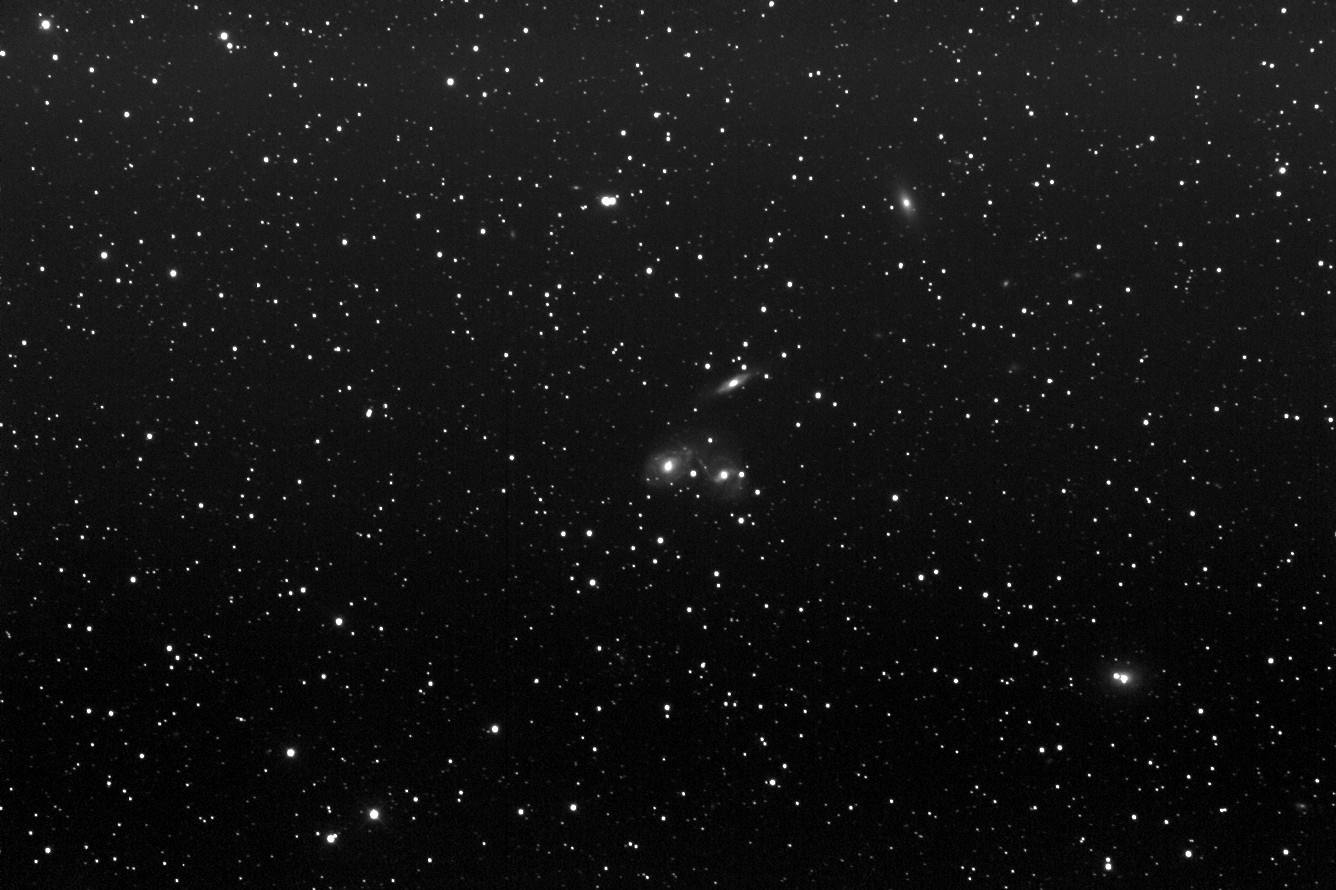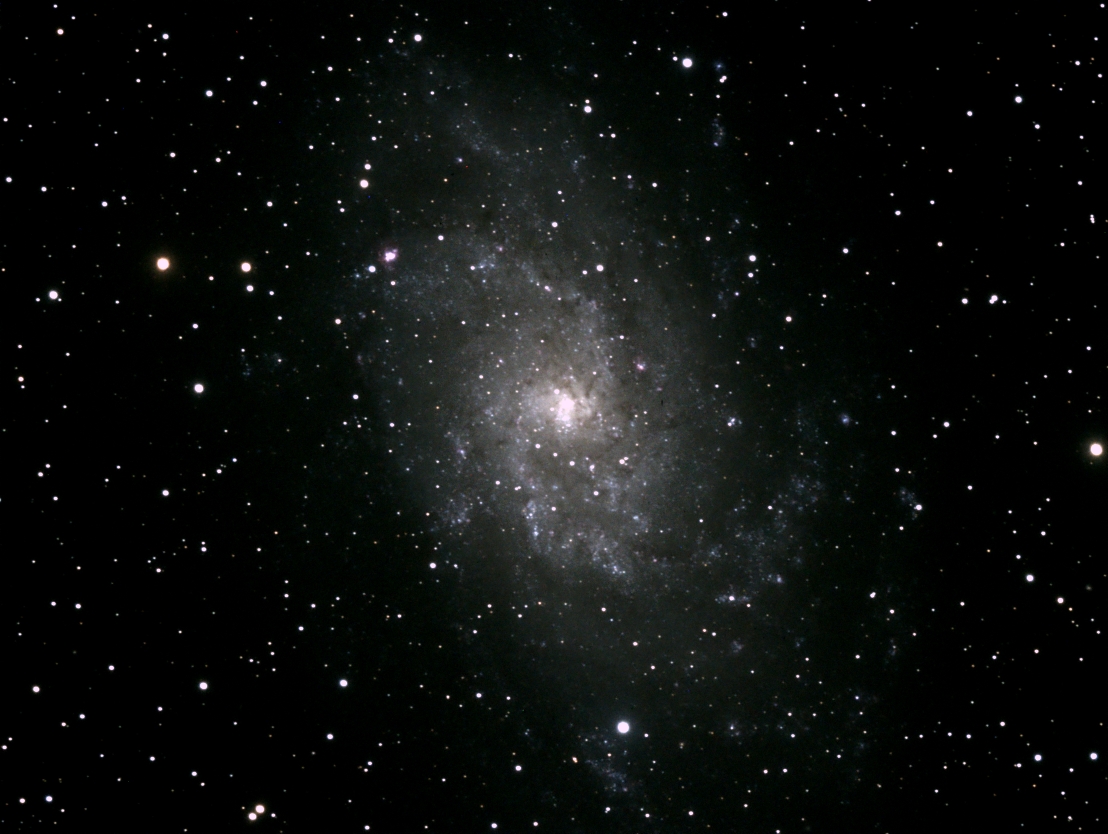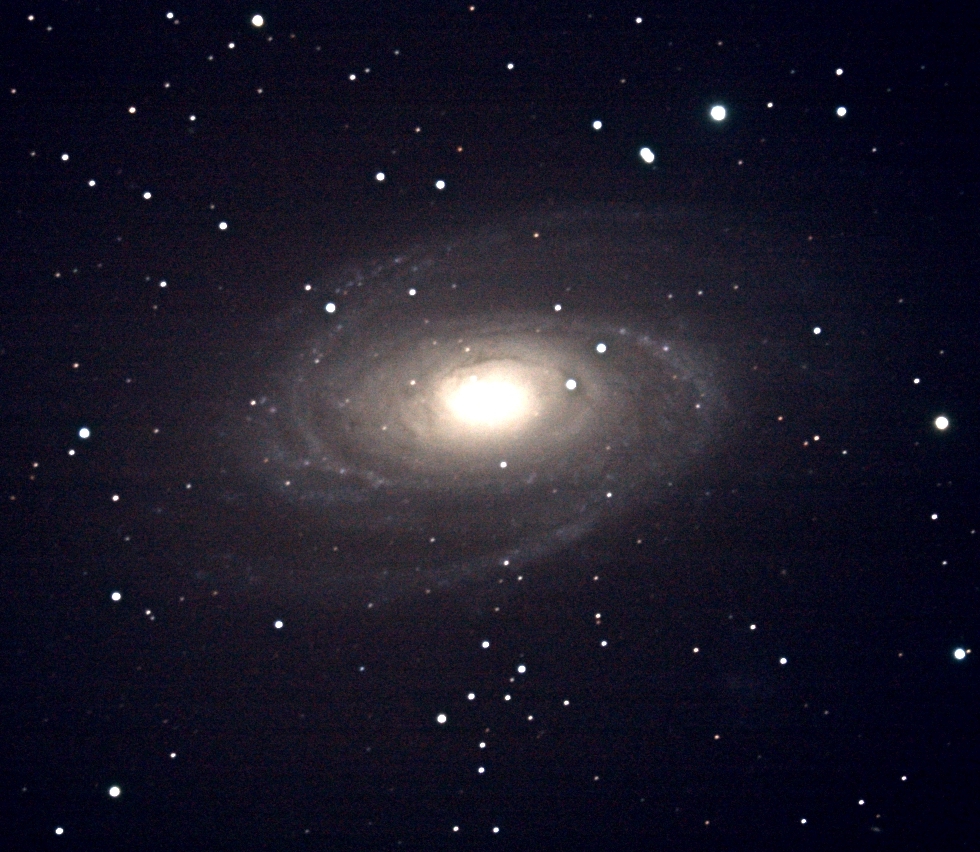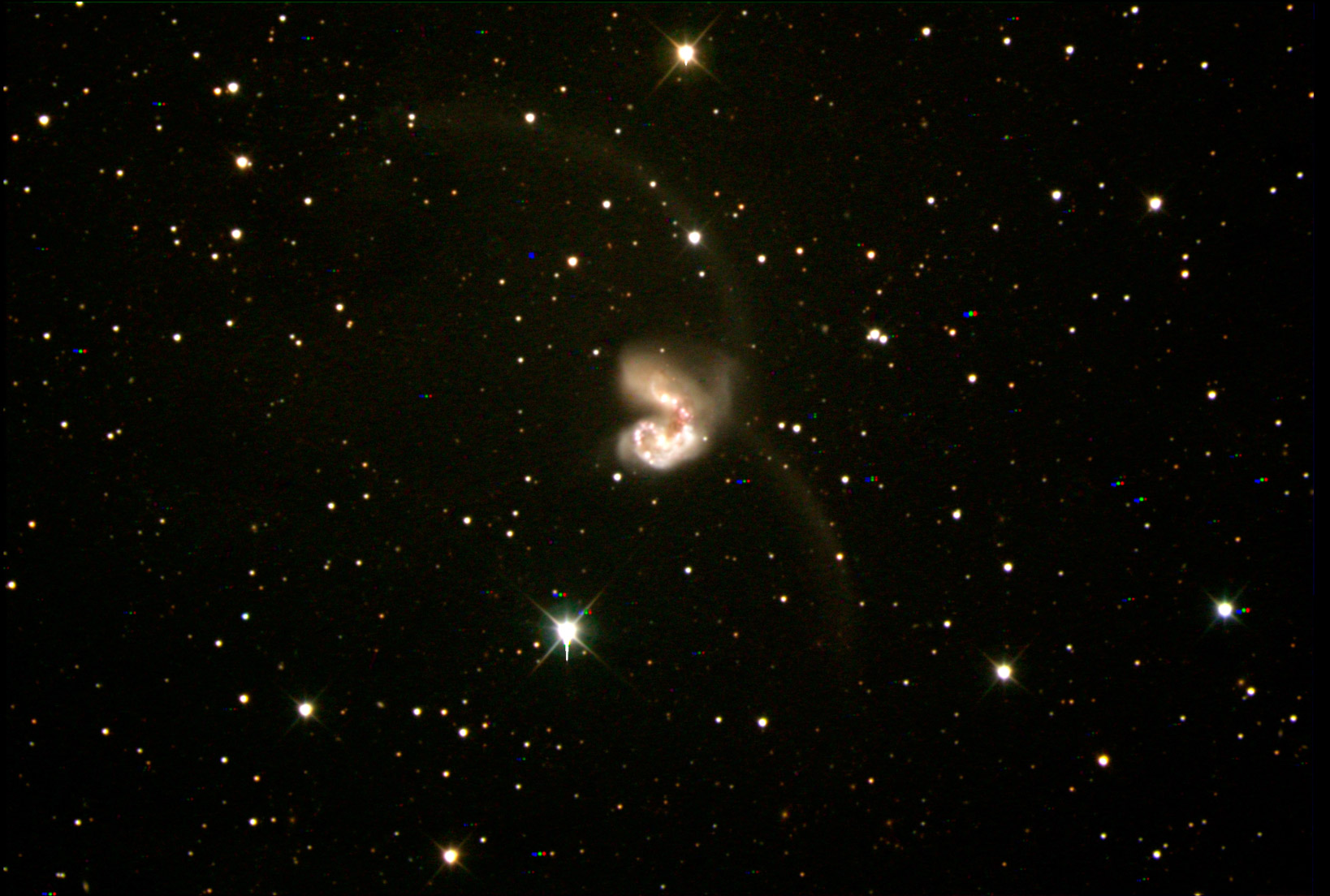Late in 1774, the German astronomer Johann Bode began to look for nebulae and star clusters. On the last day of the year he was credited with the original discovery of two galaxies, later to become known as M81 and M82. Just 38′ apart, they make a fine pair in the northern sky of Ursa Major. The target of this picture is M82.
An irregular galaxy, M82 shows signs of disruption and star formation caused by a recent encounter with M81 and is a strong radio source as well .
The Breckland 20″ telescope was used for this image with a Canon 350D. Sub frames were kept short at 20 seconds using ISO 1600 to avoid star trailing and this is the result of a stack of 14.


